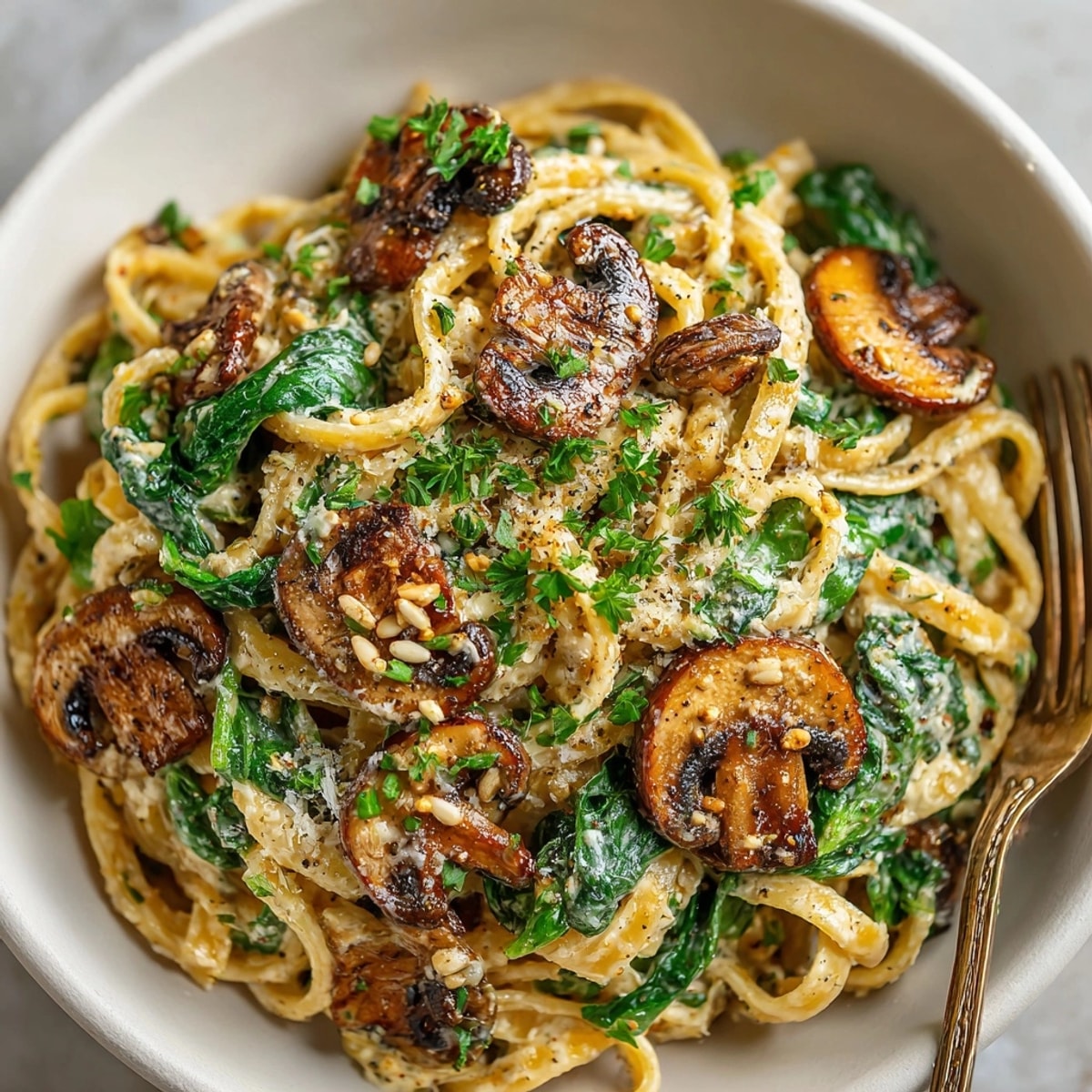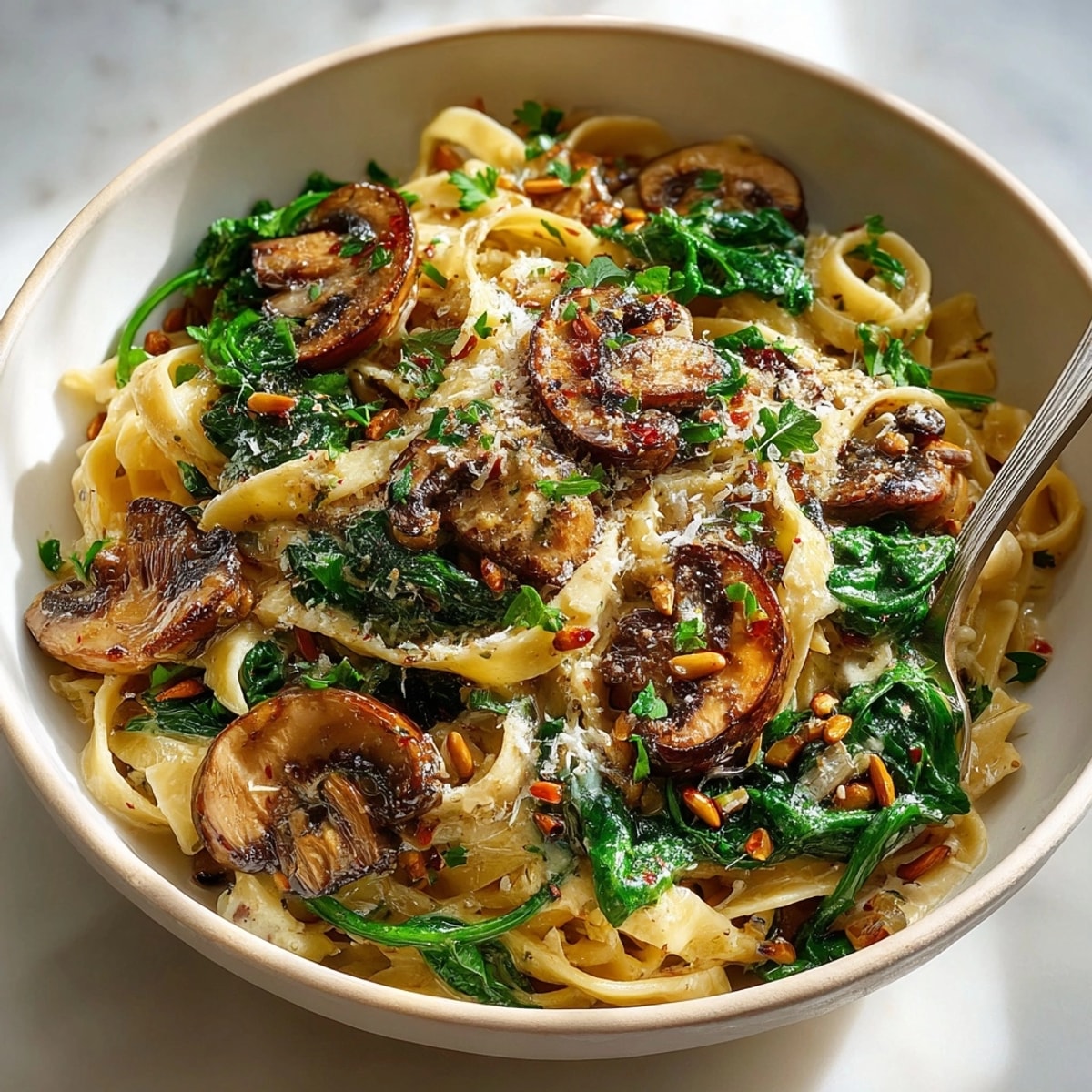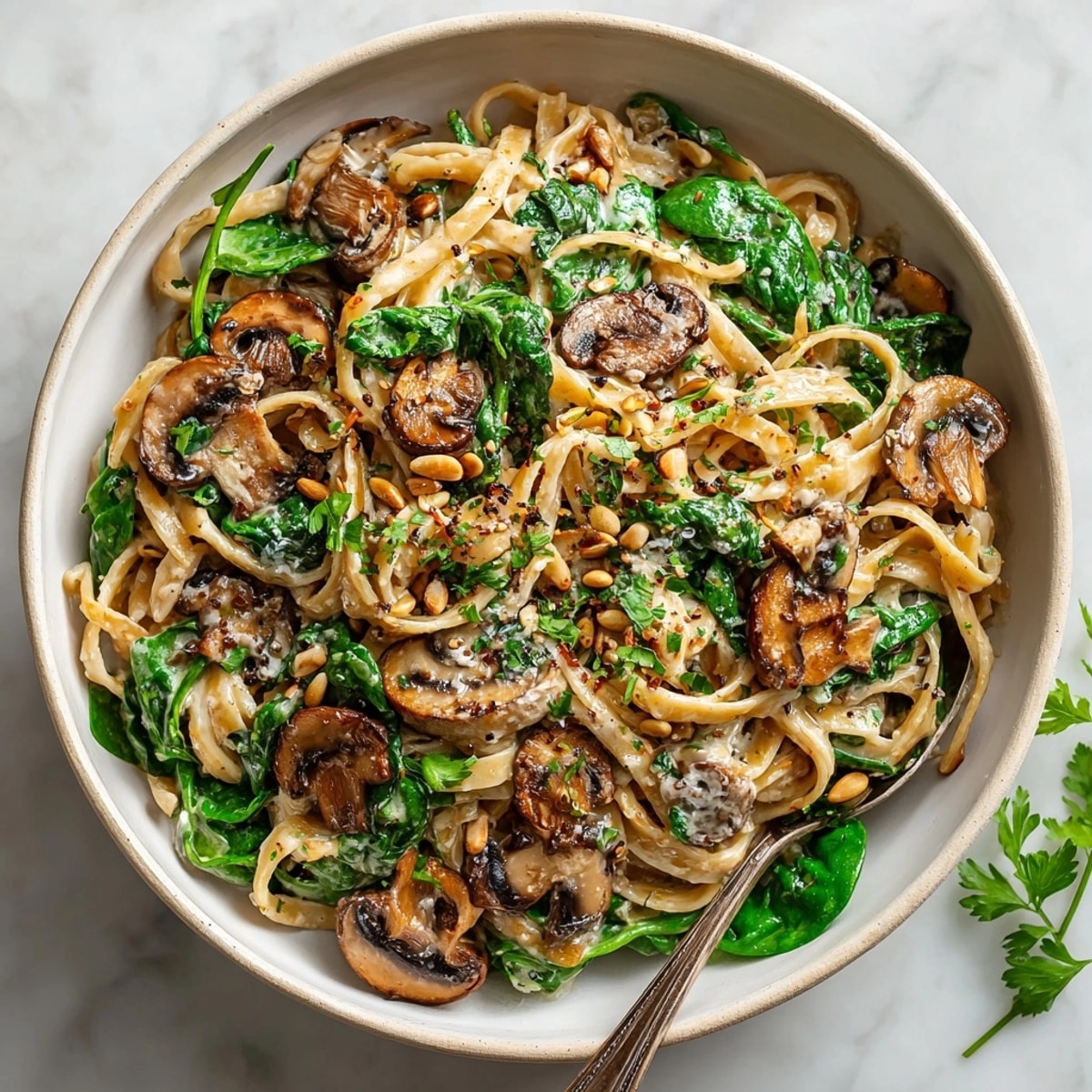 Save
Save This adaptogenic mushroom pasta has become my go-to recipe when life gets hectic and I need something nourishing that actually helps my body manage stress. The combination of medicinal mushrooms and calming herbs creates a dish that's both delicious and functional, supporting your nervous system while satisfying your pasta cravings.
I discovered this recipe during a particularly stressful period at work last year, and it's become my secret weapon for maintaining balance. My friends always ask what makes this pasta so comforting—little do they know they're getting a dose of ancient herbal medicine with every delicious bite!
Ingredients
- Whole wheat fettuccine: The nutty flavor complements the earthy mushrooms perfectly. Look for bronze-die extruded pasta for better sauce adhesion.
- Cremini mushrooms: These provide a meaty texture and rich umami flavor. Choose firm specimens with dry caps.
- Shiitake mushrooms: Their medicinal properties boost immunity while adding chewy texture. Select ones with thick caps and avoid any with slimy spots.
- Ashwagandha powder: This adaptogen helps regulate cortisol levels. Purchase from reputable suppliers for maximum potency.
- Reishi mushroom powder: Known as the "mushroom of immortality" in traditional Chinese medicine. Ensure it's certified organic.
- Holy basil and lemon balm: These calming herbs support mood balance. The fresher the dried herbs, the better the flavor profile.
- Nutritional yeast: Creates a cheesy flavor without dairy. Look for fortified varieties with B vitamins.
- Plant-based milk: Forms the base of our creamy sauce. Oat milk provides the richest texture.
Instructions
- Pasta Preparation:
- Cook your whole wheat fettuccine according to package directions until perfectly al dente. This typically takes 7-9 minutes in salted boiling water. Be sure to reserve half a cup of starchy pasta water before draining, as this liquid gold will help create a silky sauce later. The pasta should have a slight resistance when bitten—overcooking will result in a mushy final dish.
- Aromatic Base Development:
- Heat olive oil in a large skillet until it shimmers but doesn't smoke. Add finely chopped onion and cook for 2-3 minutes, stirring occasionally until they become translucent but not browned. This creates the foundation of flavor for our sauce. The onions should become soft and slightly sweet as their natural sugars begin to release.
- Mushroom Magic:
- Add minced garlic and both varieties of sliced mushrooms to the skillet. Cook for a full 6-8 minutes, allowing the mushrooms to release their moisture and then begin to caramelize. This patience is rewarded with concentrated umami flavor and golden edges. Notice how the mushrooms shrink as they cook, concentrating their earthy essence.
- Adaptogenic Infusion:
- Sprinkle in the ashwagandha powder, reishi powder, holy basil, lemon balm, black pepper, and salt. Stir continuously for exactly one minute to toast these ingredients gently, which activates their beneficial compounds and releases their aromatic qualities. The spices should become fragrant but not burnt.
- Sauce Creation:
- Pour in plant-based milk, vegetable broth, and nutritional yeast, stirring to incorporate. Bring to a gentle simmer—tiny bubbles around the edge of the pan, not a rolling boil. Allow the mixture to reduce for 4-5 minutes, stirring occasionally as it thickens to a silky consistency that coats the back of a spoon.
- Green Integration:
- Add the chopped spinach and watch it wilt into the sauce within about a minute. This adds vital nutrients and a pop of color to our dish. The spinach should retain its vibrant green color rather than turning dull.
- Final Harmonizing:
- Brighten the flavors with fresh lemon juice, then add the cooked pasta directly to the sauce. Using tongs, gently toss everything together for about 1-2 minutes, allowing the pasta to absorb some sauce. If it seems too thick, add reserved pasta water a tablespoon at a time until you achieve the perfect consistency.
 Save
Save Ashwagandha is my favorite ingredient in this recipe because it's known as the "strength of ten horses" in Ayurvedic medicine. My grandmother actually introduced me to adaptogenic herbs when I was going through final exams in college. She would make me special teas with these same herbs, and incorporating them into everyday cooking feels like carrying on her tradition of healing through food.
The Science Behind Adaptogens
Adaptogenic herbs and mushrooms work by helping your body resist various stressors—whether physical, chemical, or biological. When incorporated into your regular diet, they can support your adrenal system, which manages your stress response. The reishi mushroom powder in this recipe contains triterpenes and beta-glucans that may help modulate immune function, while ashwagandha has been shown in studies to reduce cortisol levels by up to 30% with regular use. These ingredients work synergistically with the nutrient-dense whole foods in the pasta to create a truly functional meal.
Storage and Meal Prep
This adaptogenic pasta keeps beautifully in the refrigerator for up to 4 days in an airtight container. The flavors actually deepen overnight as the herbs and spices continue to infuse the sauce. When reheating, add a splash of plant milk or water to refresh the sauce, and warm gently over medium-low heat. For best results, stir occasionally while reheating to prevent sticking. The dish can also be frozen in individual portions for up to 2 months, though the texture of the pasta may change slightly upon thawing.
Adaptogen Alternatives
If you cannot find specific adaptogenic herbs for this recipe, there are several substitutions that work well. Lion's mane mushroom powder can replace reishi for similar cognitive benefits. Rhodiola or eleuthero can substitute for ashwagandha if you prefer more energizing properties. For those new to adaptogens, start with half the recommended amount and
Serving For Maximum Benefits
To enhance the stress-relieving properties of this dish, consider your dining environment and accompaniments. Serve this pasta in a calm setting, away from screens and distractions. Pair it with a side of lightly dressed bitter greens like arugula or dandelion to support liver function, which helps process stress hormones. A glass of tart cherry juice or a cup of chamomile tea makes an excellent beverage pairing, as both contain natural compounds that support relaxation and sleep quality.
Seasonal Adaptations
Summer Version. Replace spinach with fresh basil and add halved cherry tomatoes during the final cooking stage. Finish with a sprinkle of lemon zest for brightness.
Fall Variation. Incorporate diced butternut squash, roasted for 20 minutes before adding to the sauce. Add a pinch of nutmeg and cinnamon for warming comfort.
Winter Comfort. Stir in roasted garlic and a handful of kale instead of spinach. Consider adding a tablespoon of white miso paste to the sauce for depth.
 Save
Save This dish is best enjoyed fresh, but leftovers store well for a few days. Reheat gently to preserve the delicate flavors and creamy texture.
Recipe FAQ
- → Can I use other types of mushrooms?
Yes, you can substitute cremini and shiitake with your favorite mushrooms such as oyster, portobello, or button for different flavors.
- → How do adaptogenic powders affect taste?
Adaptogens like ashwagandha and reishi have subtle earthy notes that blend well with the mushrooms and herbs in the sauce.
- → What plant-based milk works best?
Oat or almond milk are recommended for a creamy texture, but any unsweetened plant-based milk can be used.
- → Is this dish suitable for gluten-free diets?
To make it gluten-free, use gluten-free pasta and double-check all adaptogenic blends for hidden gluten ingredients.
- → Can I prepare this meal in advance?
Yes, the sauce can be made ahead and stored in the fridge. Combine with freshly cooked pasta when ready to serve.
- → How can I make the sauce richer?
Use cashew cream or a splash of coconut cream for extra richness and a smooth mouthfeel.